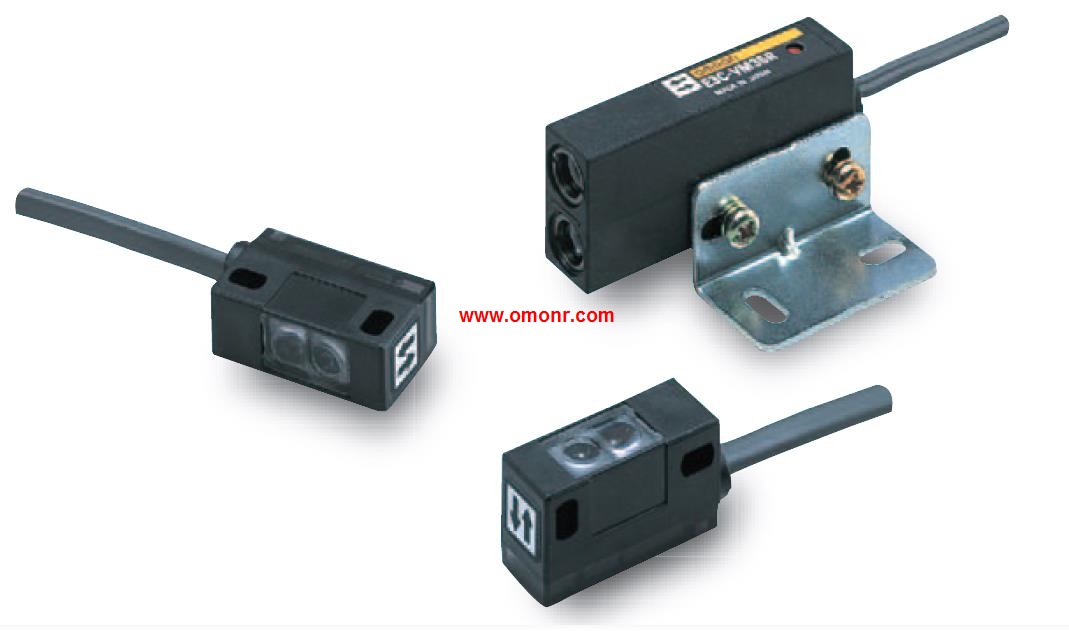Home
>> Products
>> OMRON
>> Sensor
>> Photoelectric sensor
>> photoelectric sensor amplifier separation type
>> E3C-1 | OMRON Photoelectric sensor E3C-1
E3C-1 | OMRON Photoelectric sensor E3C-1
OMRON E3C-1 Manual And Instructions
E3C-1 datasheetPDF datasheet
OMRON E3C-1 Product information and technical parameters:
Brand: OMRON
Name: Photoelectric sensor
Model: E3C-1
Detection methods: the firing pattern.
Detection range: 1m.
Purpose: small,
Small thin space probe;
Interference prevention function with close installation
...More relevant models >>>>
E3C-1 datasheetPDF datasheet
OMRON E3C-1 Product information and technical parameters:
Brand: OMRON
Name: Photoelectric sensor
Model: E3C-1
Detection methods: the firing pattern.
Detection range: 1m.
Purpose: small,
Small thin space probe;
Interference prevention function with close installation
Item: Advanced models; External-input models.
Functions: Remote setting, counter, differential operation.
Model: PNP output.
Advanced Fiber Amplifier Units.
Features a Power Tuning function that optimizes light,
reception at the press of a button.
APC circuits to suppress LED aging degradation used with,
4-element LEDs OMRON E3C-1.
2-channel models achieve the thinnest* profile in the industry,
at only 5 mm per channel E3C-1
2-channel models also offer AND/OR control output.
The E3X-MDA0 with two channels supports an EtherCAT Sensor.
Communications Unit or CompoNet Sensor Communications Unit. Size: M12 (Brass); Double; Unshielded.
Sensing distance: 16 mm.
Connecting method (See note 1.): M12 Connector OMRON E3C-1.
Body length: Short.
Output configuration: PNP.
Operation mode NO.
A new generation in global applications. E32-T61-S type: environment resistant; heat resistant,
Specialty: heat resistant: 350,
Shape / detection distance (mm): 600; 450; 300 (120),
Bending radius (mm): R25.
Standard test object (minimum test object) (mm) 1: 1 (0.005),
Fiber element for meeting diversified needsE32-L24S type: special light beam type; limited reflection,
Specialty: ultra small head,
Bending radius (mm): R10 OMRON E3C-1.
Standard test object (minimum test object) (mm) 1: (0.005),
Fiber element for meeting diversified needsNPN input / outputSize: M8(Stainless steel)(See note 2.); Single; Shielded.
Sensing distance: 1.5 mm.
Connecting method (See note 1.): Pre-wired.
Body length: Short.
Output configuration: NPN.
Operation mode NO.
A new generation in global applications. Sensing method: Through-beam (Emitter + Receiver).
Connection method: Pre-wired (2 m).
Sensing distance: 15 m.
Model: NPN output .
The Standard for Phhotoelectric Sensors,
with a Secure Track Record of One,
Million Sold Yearly E3C-1.
Long sensing distance of 30 m for Through-beam Models, 4 m for,
Retro-reflective Models, and 1 m for Diffuse-reflective Models.
Mechanical axis and optical axiss offset of less than ±2 E3C-1. 5° simplifies,
optical axis adjustment.
High stability with unique algorithm that prevents interference of,
external light.
Functions: Remote setting, counter, differential operation.
Model: PNP output.
Advanced Fiber Amplifier Units.
Features a Power Tuning function that optimizes light,
reception at the press of a button.
APC circuits to suppress LED aging degradation used with,
4-element LEDs OMRON E3C-1.
2-channel models achieve the thinnest* profile in the industry,
at only 5 mm per channel E3C-1
2-channel models also offer AND/OR control output.
The E3X-MDA0 with two channels supports an EtherCAT Sensor.
Communications Unit or CompoNet Sensor Communications Unit. Size: M12 (Brass); Double; Unshielded.
Sensing distance: 16 mm.
Connecting method (See note 1.): M12 Connector OMRON E3C-1.
Body length: Short.
Output configuration: PNP.
Operation mode NO.
A new generation in global applications. E32-T61-S type: environment resistant; heat resistant,
Specialty: heat resistant: 350,
Shape / detection distance (mm): 600; 450; 300 (120),
Bending radius (mm): R25.
Standard test object (minimum test object) (mm) 1: 1 (0.005),
Fiber element for meeting diversified needsE32-L24S type: special light beam type; limited reflection,
Specialty: ultra small head,
Bending radius (mm): R10 OMRON E3C-1.
Standard test object (minimum test object) (mm) 1: (0.005),
Fiber element for meeting diversified needsNPN input / outputSize: M8(Stainless steel)(See note 2.); Single; Shielded.
Sensing distance: 1.5 mm.
Connecting method (See note 1.): Pre-wired.
Body length: Short.
Output configuration: NPN.
Operation mode NO.
A new generation in global applications. Sensing method: Through-beam (Emitter + Receiver).
Connection method: Pre-wired (2 m).
Sensing distance: 15 m.
Model: NPN output .
The Standard for Phhotoelectric Sensors,
with a Secure Track Record of One,
Million Sold Yearly E3C-1.
Long sensing distance of 30 m for Through-beam Models, 4 m for,
Retro-reflective Models, and 1 m for Diffuse-reflective Models.
Mechanical axis and optical axiss offset of less than ±2 E3C-1. 5° simplifies,
optical axis adjustment.
High stability with unique algorithm that prevents interference of,
external light.
...More relevant models >>>>
Related download


 Last one:
Last one:  next one:
next one: 